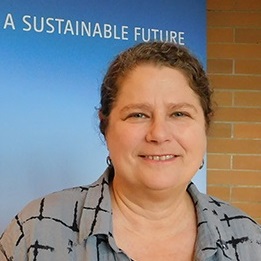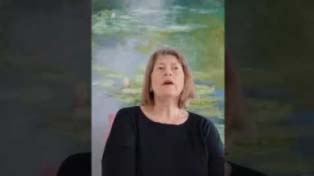Video to Mark the 30th Anniversary of ASCOBANS - Conserving Small Cetaceans in European Seas
Statements to Mark the 30th Anniversary of ASCOBANS
To mark the 30th Anniversary of the Agreement, the ASCOBANS Secretariat has received statements from key stakeholders and partners

As UNEP commemorates its 50th anniversary, ASCOBANS – the Agreement on the Conservation of Small Cetaceans of the Baltic, North-East Atlantic Irish and North Seas – an important specialized environmental treaty that we are so proud is part of the UNEP family – marks 30 years of its existence. 30 years of fostering effective international collaboration for the conservation of small cetaceans in European seas. 30 years of supporting international action grounded in science. 30 years of protecting species from the onslaught of human activity. 30 years of demonstrating that transboundary action for the environment can unify governments and people.[Read More]
Ms. Inger Andersen, Executive Director of UN Environment Program

ASCOBANS fosters international collaboration and collective action, among governments, scientists, policy makers, and partner organisations. It provides a platform to agree on tangible solutions to key threats, such as bycatch, underwater noise and pollution. It also provides science-based advice and guidance to inform decisions on how to mitigate these threats.[Read More | Watch]
Ms. Amy Fraenkel, Executive Secretary of ASCOBANS

Swedish Agency for Marine and Water Management











30th Anniversary
Press Release Thirty Years of Conservation Measures for Small Cetaceans in European Seas
Video ASCOBANS 30 - Conserving Small Cetaceans in European Seas
Full Statement from Inger Andersen, Executive Director of UNEP Statement on the 30th anniversary of the ASCOBANS Agreement
Full Statement from Amy Fraenkel, Executive Secretary Statement of Amy Fraenkel, Executive Secretary of ASCOBANS to Mark the 30th Anniversary of the Agreement
A Brief History of ASCOBANS
CONCEPTION
Widespread concern over the decline of harbour porpoise populations around Europe acted as a catalyst for the development of ASCOBANS. The idea for an instrument for small cetaceans of the Baltic and North Seas started at the First Meeting of the Conference of the Parties to CMS in 1985. At COP1, a Working Group was established to draft a suitable agreement.
However, no consensus was reached regarding the content and scope, and the Working Group was disbanded in 1988. The process was revived in 1990, when a Memorandum of Understanding on Small Cetaceans of the North Sea was adopted by the Third North Sea Ministerial Conference.
NEGOTIATION
The negotiations to agree the treaty culminated at the CMS COP3, held in Geneva, Switzerland in 1991. The Agreement on the Conservation of Small Cetaceans of the Baltic and North Seas was concluded on 17 March 1992 and opened for signature in the UN Headquarters in New York, USA.
ENTRY INTO FORCE
The Agreement entered into force on 24 November 1994, having secured the requisite number of ratifications (six): Belgium, Denmark, Germany, the Netherlands, Sweden, and the United Kingdom. The Secretariat is now housed in the UN Campus on the banks of the River Rhine, in the building which used to provide office space for German parliamentarians.
In 2008, the extension of the Agreement Area further to west and southwest entered into force. That changed the name to Agreement on the Conservation of Small Cetaceans of the Baltic, North East Atlantic, Irish and North Seas, as it is known today.
THE WORK
Since migrating cetaceans regularly cross national boundaries, their protection can only effectively be achieved by means of international cooperation. Therefore the aim of ASCOBANS is to promote close cooperation amongst Parties with a view to achieving and maintaining a favourable conservation status for small cetaceans in the Agreement Area. A Conservation and Management Plan, which forms part of the Agreement, obliges Parties to engage in habitat conservation and management, surveys and research, pollution mitigation and public information. To achieve its aim, ASCOBANS also cooperates with Range States that have not (yet) acceded to the Agreement, with relevant intergovernmental organizations, and non-governmental organizations.
Three main bodies promote the implementation of the Agreement:
The Meeting of the Parties (MOP) is the decision-making body of the Agreement. It meets every three years to assess progress and develop further steps in the implementation of ASCOBANS. Non-Party Range States and relevant regional, intergovernmental and non-governmental organizations can attain observer status to attend MOP meetings without having power to vote.
The Advisory Committee (AC), which now meets once a year (except on MOP years), provides scientific and policy advice to the Parties and the Secretariat on the conservation and management of small cetaceans and on other matters related to the running of the Agreement. Each Party is entitled to appoint one member to the AC, who may be accompanied by advisors. As with the MOP, external observers may take part in AC meetings, while the nominated members are the only ones entitled to vote.
The ASCOBANS Secretariat acts as the coordinating body of the Agreement. It provides administrative support, gathers, and disseminates relevant information and supports the Parties in the implementation of the Agreement, including facilitating the work of different working groups. In addition, it prepares content for, organizes and services the meetings of the MOP and the AC. As with CMS and some of its other regional daughter agreements, the ASCOBANS Secretariat is administered by the United Nations Environment Programme, and is based in Bonn, Germany.




